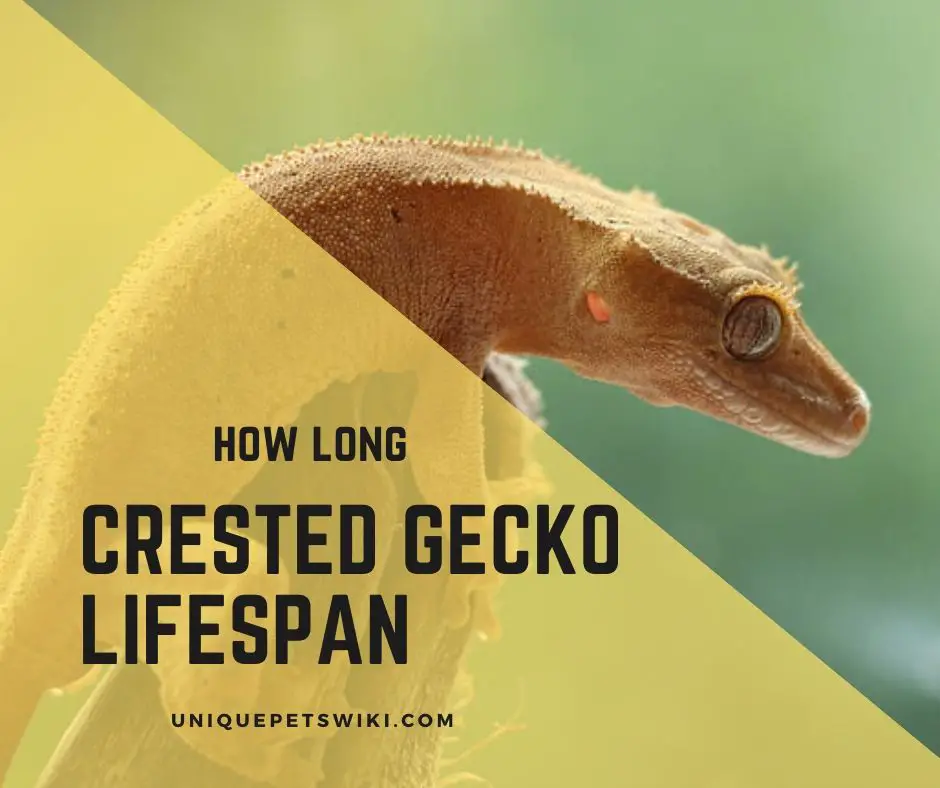The lifespan plays a crucial role when preparing for getting a pet. Crested gecko lifespan is long, similar to other larger pets like cats and dogs.
Keeping crested geckos is a long-term commitment, and it is best to be prepared to care for them for decades.
Crested geckos are perfect pets to keep for all kinds of herpetologists from beginners to experts. In this article, you will get an insight into the lifespan of crested geckos in captivity and the wild.
You will also learn more about the factors that can influence their lifespan.
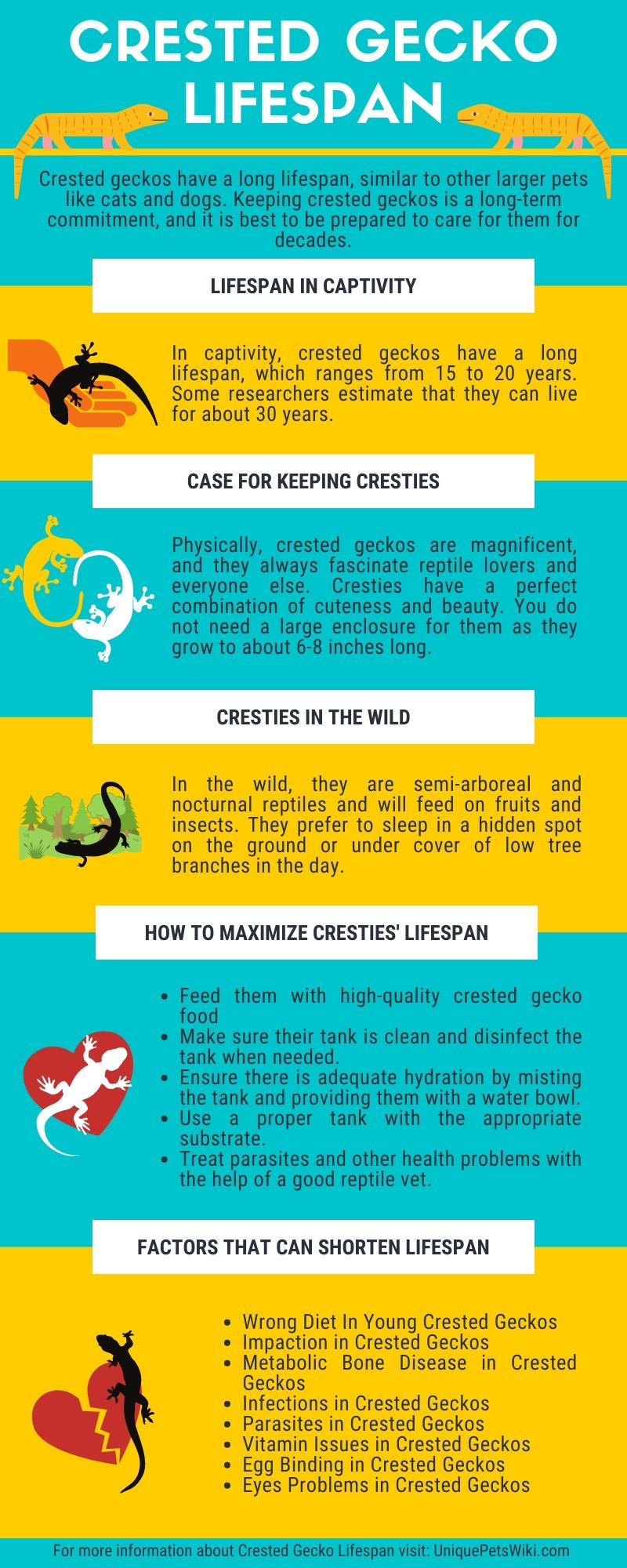
Contents
Crested Gecko Lifespan in Captivity: How Long Crested Geckos Live in Captivity?
In captivity, crested geckos have a long lifespan, which ranges from 15 to 20 years. Some researchers estimate that they can live for about 30 years. However, numerous factors can influence their lifespan like care, genetics, and diets.
The Case for Keeping Crested Geckos
Physically, crested geckos are magnificent, and they always fascinate reptile lovers and everyone else.
Cresties have a perfect combination of cuteness and beauty. They come in a wide range of colors, from charcoal to vivid red. Another magnificent thing is that it colors up at night. You do not need a large enclosure for them as they grow to about 6-8 inches long.
They have velvety soft skin with tiny claws that can never hurt. Their faces are comical, and their eyes are covered with tiny ‘eyelash’ scales.
A slight advantage of crested geckos over leopard geckos and bearded dragons is that it is easy to set up their tank. They are a friendly lizard but are flighty and will fly from one object to another.
Although they do not like to be handled, they will put up with an adequate amount of handling.
Crested Geckos Lifespan in the Wild
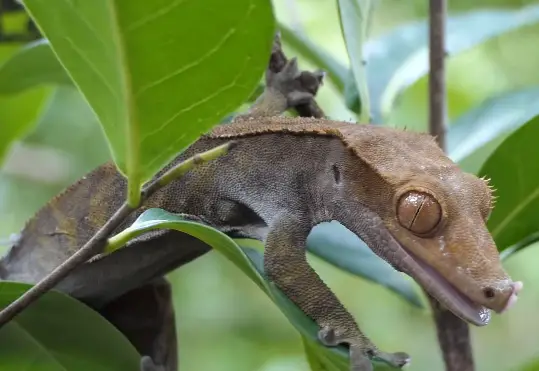
Little information is known about crested geckos in the wild. Since they were rediscovered in 1994, cresties have been bred in captivity. However, crested geckos are native to New Caledonia, a block of islands off the Australian coast.
In the wild, they are semi-arboreal and nocturnal reptiles and will feed on fruits and insects. They prefer to sleep in a hidden spot on the ground or under cover of low tree branches in the day.
Cresties love leaping among the trees and getting most of their water from licking the raindrops off leaves.
At night, crested gecko feeds on fruit that has softened on insects or the forest floor. They also feed on moths, crickets, spiders, and other insects throughout the forests. They chirp or bark to communicate with other cresties or to ward off predators.
New to crested gecko? Check out the crested gecko care sheet now! We had listed out all the things you need to know about crested gecko as pets. Check it now!
Crested geckos in the wild have a long lifespan like those in captivity. However, the major threats to the lifespan of crested geckos in the wild are habitat loss, predation by rodents and pets, and introduction of the little fire ant.
How to Maximize Your Crested Gecko Lifespan?
Some of the tips that you can follow to maximize your crested gecko’s lifespan are stated below.
- Feed them with high-quality crested gecko food
- Make sure their tank is clean and disinfect the tank when needed.
- Ensure there is adequate hydration by misting the tank and providing them with a water bowl.
- Use a proper tank with the appropriate substrate.
- Supplement their food with vitamins and minerals.
- Weigh your gecko from time to time
- Treat parasites and other health problems with the help of a good reptile vet.
Note: In general, female reptiles have a decreased lifespan because of breeding. This is because breeding puts strains on their nutrition stores and may even cause a risk of emergency health situations like egg binding. Some of the tips that can help maximize breeder stocks (females) are stated below.
- Ensure you feed them with high-quality crested gecko diet
- Make sure their weight is around 40g at all times
- Females should have at least four months of rest between breeding seasons
- Provide them with a lay box at all times
- Give them supplemented insects as a healthy treat.
Feed Your Crested Gecko the Right Foods
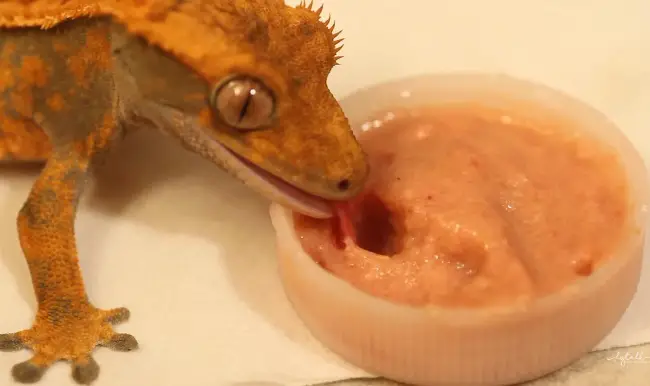
(Source: Leopard Gecko YouTube)
Feeding your cresties with a healthy diet is essential for their wellbeing and lifespan.
Produce
You will find a wide range of reputable brands that make commercial crested gecko food that will give your crested geckos all the nutrients that it needs. There are two types of commercial crested gecko food available in the market. They are:
Meal Replacement powders (MRP): This type of crested gecko diet is produced in powder form, and it will then be mixed with water to form a paste.
Granules/pellets: This crested gecko diet is produced in little ball-shaped granules form, and you can just feed your cresties directly with it.
Insects
Both in the wild and captivity, crested geckos love to hunt for insects and worms. Insects are a protein source for geckos and ensure they are not larger than the distance between your gecko’s eyes. Some of the popular insects and worms that you can feed cresties are crickets, dubia roaches, mealworms, super worms, waxworms, etc.
Dietary Supplements
When feeding your cresties with insects and worms, there is a need to gut-load or dust them with dietary supplements.
Gut loading involves feeding the insects with supplements a day before you feed them to your cresties. While dusting means coating the insects with supplements before you feed them to the gecko.
Food to Avoid – What You Should NOT Feed Your Cresties
Here are some of the food that can affect the lifespan of crested geckos, they are:
Baby Food
Fruit-based baby foods can be used to replace fresh fruit for your crested geckos. However, baby food comprises high amounts of sugar, additives, and preservatives, which can be bad for geckos. This is why it is best to avoid this and use a healthy alternative diet for your cresties.
Large Insects
Insects are a perfect diet that you can use to feed your gecko. But you will need to ensure that the insects are not too big for them. Feeding with a large insect can lead to constipation problems for your gecko.
Citrus fruits
Citrus fruit is considered harmful for cresties due to the presence of citric acid. You can only give them to your gecko as treats and ensure it is once in a month.
8 Factors that Can Shorten Your Crested Gecko Lifespan
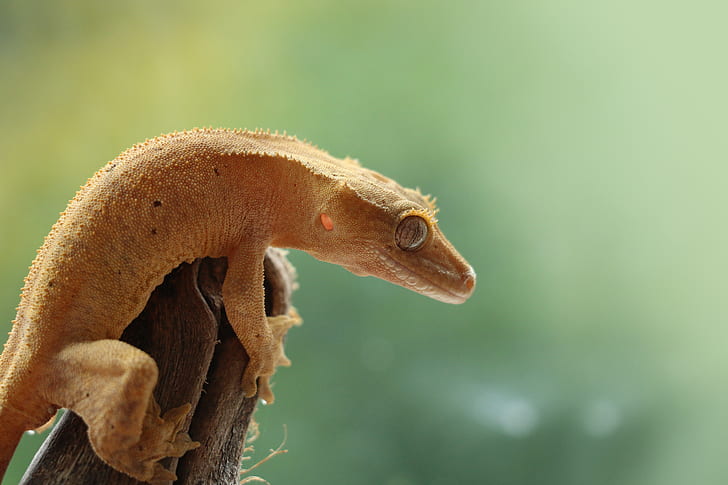
Wrong Diet In Young Crested Geckos
Feeding of baby crested geckos starts after their first shedding. You can feed them with commercial crested gecko food or a self-made fruit diet. However, feeding your young cresties with the wrong diet can lead to health issues for them in the long run.
Feeding of crested geckos with the wrong diet can cause stunted growth, tiredness, weight loss, floppy tail, soft bones, etc. This can then lead to severe health issues if it is not corrected. On the other hand, overfeeding of crested geckos to make them grow fast can also affect their optimum health.
Impaction in Crested Geckos
This occurs when your crested geckos feed on small or large objects that do not digest and get stuck in their intestines. Impaction is common in hatchlings and juvenile cresties as they are prone to swallowing substrate. To avoid impaction, it is best to keep hatchlings and juveniles on paper towels.
Symptoms of Impaction
- Rapid weight gain
- Appetite loss
- Irregular pooping
- Your gecko has a plump belly that looks very round.
Metabolic Bone Disease in Crested Geckos
This health problem occurs when you do not feed your cresties with enough Vitamin D3 and calcium. It is common in breeding females and young gecko because they need higher levels of calcium.
Symptoms of MBD
- Soft jaw
- Deformed limbs
- Weakness and reduced mobility
- Appetite loss
- Humped back
- Female cresties look tired and lifeless after laying eggs
- Kinking of the tail and spine
- Calcium sacs in the mouth become pale, flat, and almost invisible in adult gecko.
Treating Metabolic Bone Disease
You can only treat mild cases of MBD in crested geckos. Severe cases of MBD can cause irreversible damage. It is best to act immediately when you notice the symptoms related to MBD in your gecko.
Feed them with calcium and vitamin D3 supplements once you notice signs of MBD. You can also take them to a vet for expert advice on ways of treating the disease.
New to crested gecko? Check out the crested gecko care sheet now! We had listed out all the things you need to know about crested gecko as pets. Check it now!
Preventing MBD
- Providing your cresties with a well-balanced diet can help prevent MBD. You should also supplement their diet with calcium, Vitamin D3, and other supplements.
- When feeding them with insects, you should gut-load and dust the insect with supplements before feeding them to the gecko.
- Only feed your cresties with purees, baby food, and fresh fruits as treats.
- Create a resting period for female crested geckos after egg production to restore her calcium levels before another breeding season.
Infections in Crested Geckos
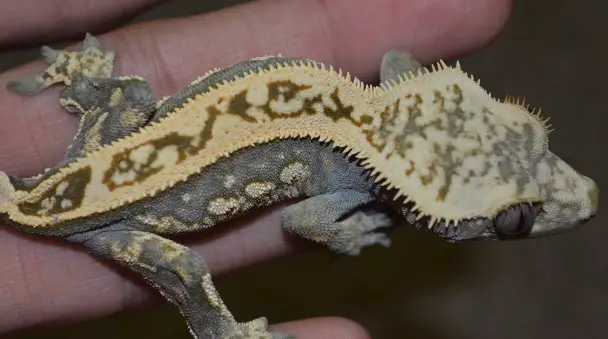
Crested geckos are prone to infections since they crawl all over the surface. Some of the common infections that can affect your gecko lifespan are stated below
Cryptosporidiosis: This infection can lead to death if untreated as it can cause digestive issues, weight loss, and malnutrition. Although this infection often infects leopard geckos rather than cresties. However, if you notice worms in the poop of your gecko, quarantine it immediately in a simple container with paper towels.
Salmonella infection: Salmonella is a bacteria that lives in the gut of reptiles. They do not cause issues for cresties, but you can contact them. It is best to wash your hands after handling your pet and clean the tank. Avoid washing your crested gecko’s accessories in the kitchen sink or eat when touching your gecko to prevent infection.
In people, salmonella can cause diarrhea, fever, and cramps. Another popular infection is coccidiosis.
Avoiding Infections
- Ensure you clean your gecko’s tank frequently and disinfect their accessories against reinfection.
- Seek the help of the vet whenever your gecko shows any signs of sickness.
Parasites in Crested Geckos
Crested geckos lifespan can be affected by different parasites; some parasites are normal, while some can make crested geckos sick. Since some worms are normal, you will need to do a stool test to monitor your gecko levels.
Note: internal parasites in high numbers can lead to diarrhea, loss of appetite, weight loss, dehydration, etc.
External Parasites in Crested Geckos
Although this does not happen very often, your cresties might get infected with mites. It is hard to remove mites and will take some time before you can clear the infestation. Some of the methods used for removing mites are mite spray, cotton buds dipped in oil or alcohol, or manually.
Vitamin Issues in Crested Geckos
Vitamin issues in crested geckos can be caused by low vitamin or excess vitamin in their diet. This can affect the lifespan of cresties as it leads to several health complications.
Hypervitaminosis A
Hypervitaminosis A is a nutritional disorder caused by an excess amount of vitamin A and can be induced by injection of vitamin A to reptiles with hypovitaminosis A. Clinical signs of hypervitaminosis A usually manifest on the skin. You will see signs like dry and scaly skin, skin ulceration, lethargy, weight loss, anorexia, and/or dehydration.
Hypothiaminosis
Hypothiaminosis is a nutritional disorder, also known as thiamine deficiency. Although this is not common in crested geckos, it can be found in animals fed thawed freezing fish, vegetation, and clams.
Some of the signs of hypothiaminosis in reptiles are muscle twitching, blindness, incoordination, abnormal posture, and can even lead to death. Affected reptiles may also not be able to strike their prey accurately.
Egg Binding in Crested Geckos

(Source: Leopard Gecko YouTube)
This is a serious health issue that occurs in female cresties. It occurs when a gravid female cannot lay mature eggs formed in her reproductive system.
Causes of Egg Binding
It is caused by the physical deformity of the female and abnormal large eggs. Another cause of this health issue is when a gravid female suffers from calcium deficiency.
Symptoms of Egg Binding
It can be difficult to determine the signs of egg binding for an inexperienced breeder. However, some things to look out for are lethargy, loss of appetite, and bloated stomach.
Treatment for Egg Binding
- Gently massage the egg area
- Give your female crested geckos a lukewarm baths
Note: The above methods can be risky, and the best thing to do is consult a vet that specializes in reptile care. Egg binding can be dangerous to crested geckos’ health and lead to death.
Eyes Problems in Crested Geckos
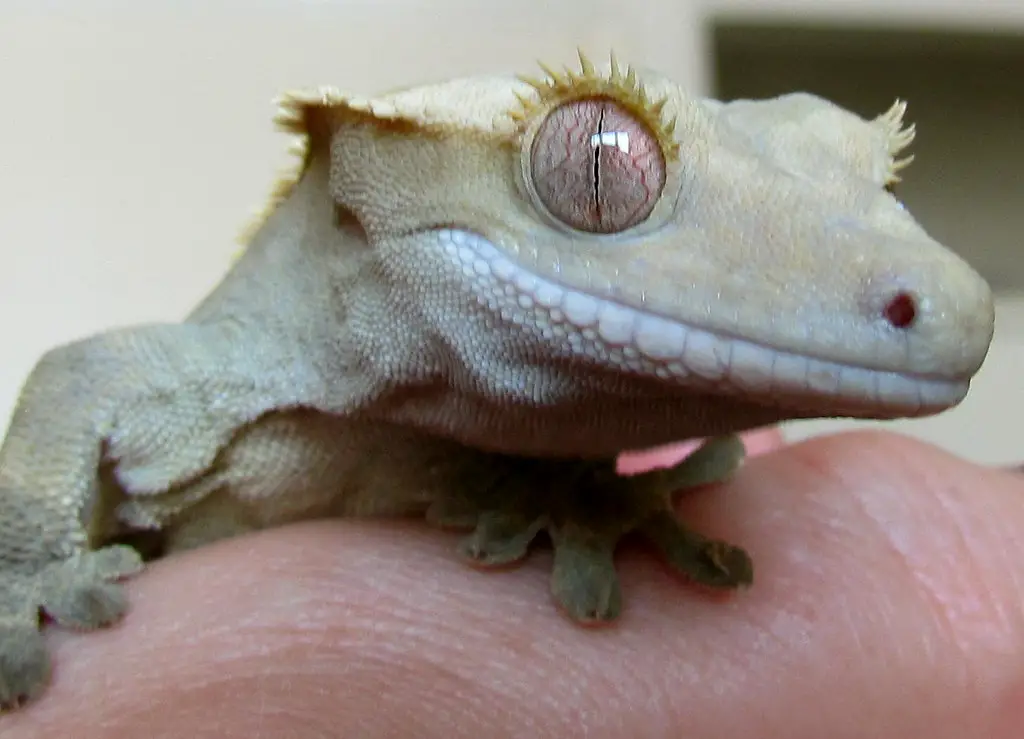
Crested geckos can develop eye problems. The major symptom of eye problems is when it looks swollen and bigger. Your gecko might have eye infection if you notice discharge in the eye or swollen up.
Your cresties may be suffering from internal eye damage or cataract if their eye does not swell or discharge fluid. You can easily treat infections by using antimicrobial eye drops.
However, you will need to take them to the vet if the eye drop does not work or suspect a cataract.
